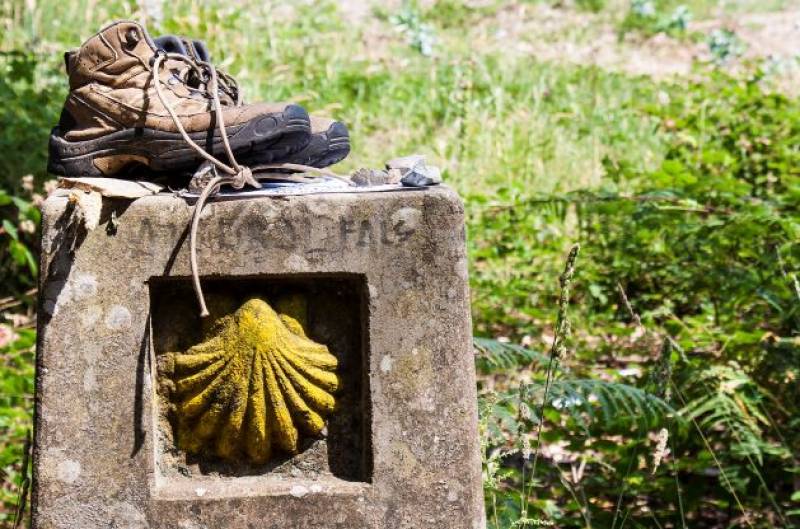article_detail
The new alternative walking route to the Camino de Santiago in Spain which is actually 1,600 years old
Pilgrims walking the St James Way in Spain from Andalusia may have walked the Eulalia Way to Mérida already without knowing it

Every year, over 300,000 people walk the St. James Way in Spain, the Camino de Santiago pilgrim hiking route and, with an understandable drop down to barely 50,000 during the Covid-19 pandemic, this number has been growing steadily year on year. In 2022, 348,000 pilgrims are expected to arrive in Santiago de Compostela, where the trail finishes.
Now, though, there is a different walking route to rival the Way of Saint James which is much lesser known among foreigners and tourists visiting from outside Spain, but which offers all the excitement and challenge of the Camino de Santiago.
The city of Mérida in Extremadura, near Spain’s western border with Portugal, was a pilgrimage destination in Spain as early as the 4th century. In fact, all the pilgrims who go to Santiago de Compostela on the St. James Way from Andalusia do so by walking the Camino de Santa Eulalia that converge in the city of Mérida. So if you’ve ever taken that Andalusia route of the Camino de Santiago, you’ll have passed along the Eulalia pilgrimage route, maybe without knowing it.
You might also like: Granada unveils first bicycle travel guide for the Camino de Santiago
The president of the Association of Friends of the Camino de Santiago de Mérida, Luis María González, is keen to promote the Eulalia Way in 2023, the Eulalian Jubilee Year. In aiming to recover the role of Mérida as one of the first Christian pilgrimages, the Association is signposting routes and holding forums to explain the historical relevance of Mérida and the Camino de Santa Eulalia in Christianity.
The local association estimates that some 16,000 pilgrims have passed through Mérida this year on their way to Compostela. The majority tend to stay overnight in the city because of the tourist attraction and because doing the stretch from Torremejía to Alcuéscar in a single day is very complicated.
The aim of the association for the next Eulalian year is that pilgrims walking and hiking in Spain know that one of the most travelled routes by the devotees had its origin in the Roman roads that came to Mérida, and it was walked by the faithful who went before the tomb of Santa Eulalia.
González insists that they do not want to compete with Santiago de Compostela as a centre of Christian pilgrimage, but they do believe it is necessary to publicise the fact that all the routes in Andalusia converge in Mérida and the origin of this crossroads in the city.
All those who leave from the south of Spain, from any of the eight Andalusian provinces, meet in Mérida. This is where those who follow the Silver Route (Vía de la Plata) and set off from Seville and those on the Mozarabic Way (Camino Mozárabe) who enter through Córdoba meet.
There are other emblematic sites in the extensive network of St James Way routes all around Spain – Puente la Reina, for example, 24 kilometres from Pamplona, where all the branches from France meet, and also Astorga, where those entering from France meet those coming along the Vía de la Plata.
A similar function is fulfilled by Mérida in the south of Spain because of the junction between the Silver Route and the Mozarabic Way. In all the guides and books written by walkers from the south, Mérida is an obligatory stop.
Image: Archive
Loading
Sign up for the Spanish News Today Editors Roundup Weekly Bulletin and get an email with all the week’s news straight to your inbox
Special offer: Subscribe now for 25% off (36.95 euros for 48 Bulletins)
OR
you can sign up to our FREE weekly roundup!
Read some of our recent bulletins:
Discount Special Offer subscription:
36.95€ for 48 Editor’s Weekly News Roundup bulletins!
Please CLICK THE BUTTON to subscribe.
(List price 3 months 12 Bulletins)
Read more stories from around Spain:
Contact Spanish News Today: Editorial 966 260 896 /
Office 968 018 268





















